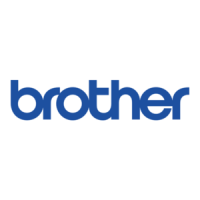Figure 2.9
As preparation for latent image formation, a uniform negative potential is applied to the
photosensitive drum surface. The printer uses the charging method that directly charges
the drum for the primary charge.
The primary charging roller consists of conductive rubber. In addition to DC bias, AC bias
is applied to the primary charging roller to keep the potential on the drum surface uniform.
This DC bias is changed with the developing DC bias.
This charging method has advantages such as lower applied voltage, less ozone
generation, etc., compared with the corona charge system.
Step 2 Scanning exposure
+++
___
Figure 2.10
When the laser beam scans the drum surface, it causes the charge to be neutralized in
the areas struck by the beam. Areas on the drum with no charge form the electrostatic
latent image.
Laser beam
Unexposed area Exposed area
DC bias
AC bias
Photosensitive drum
Primary charging roller

